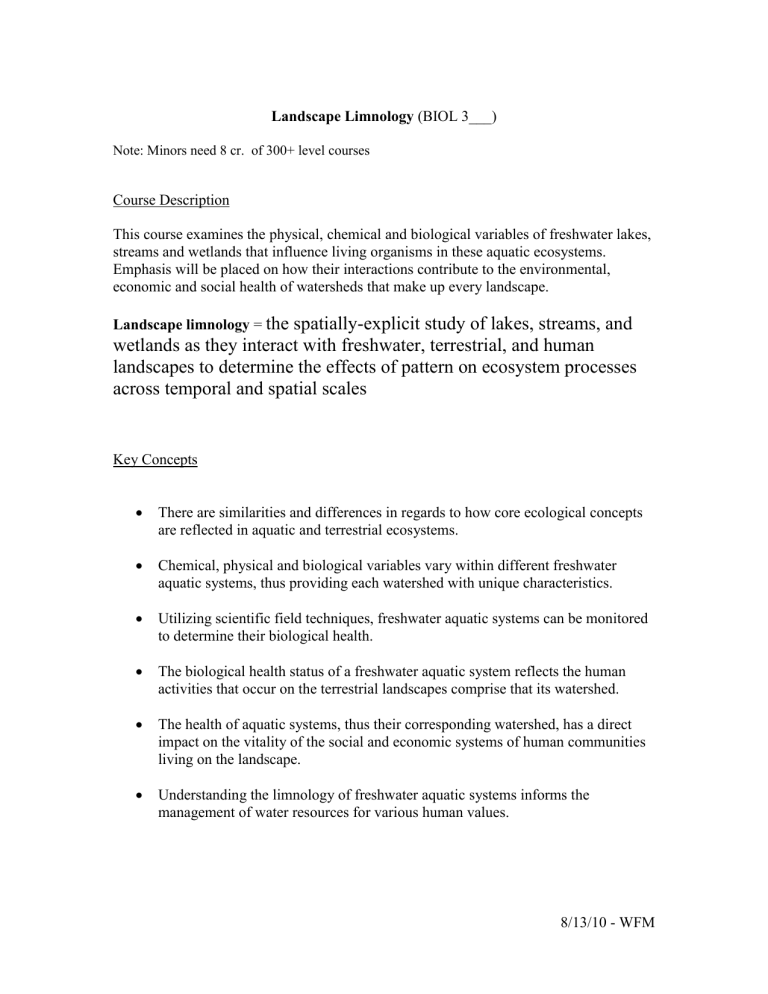Landscape Limnology Course

Landscape Limnology (BIOL 3___)
Note: Minors need 8 cr. of 300+ level courses
Course Description
This course examines the physical, chemical and biological variables of freshwater lakes, streams and wetlands that influence living organisms in these aquatic ecosystems.
Emphasis will be placed on how their interactions contribute to the environmental, economic and social health of watersheds that make up every landscape.
Landscape limnology =
the spatially-explicit study of lakes, streams, and wetlands as they interact with freshwater, terrestrial, and human landscapes to determine the effects of pattern on ecosystem processes across temporal and spatial scales
Key Concepts
There are similarities and differences in regards to how core ecological concepts are reflected in aquatic and terrestrial ecosystems.
Chemical, physical and biological variables vary within different freshwater aquatic systems, thus providing each watershed with unique characteristics.
Utilizing scientific field techniques, freshwater aquatic systems can be monitored to determine their biological health.
The biological health status of a freshwater aquatic system reflects the human activities that occur on the terrestrial landscapes comprise that its watershed.
The health of aquatic systems, thus their corresponding watershed, has a direct impact on the vitality of the social and economic systems of human communities living on the landscape.
Understanding the limnology of freshwater aquatic systems informs the management of water resources for various human values.
8/13/10 - WFM
Possible Activities
Tracking the health of the Elkhart River watershed o Monitor the nutrient level, turbidity of the headwaters o Monitor the Elkhart River to the St. Joe o Map watershed landuse and compare to water quality o Compare human health and socio-economic statistics to water quality
Explore the “control” of water o Track the water that falls on the Elkhart river watershed and the ways it is
“controlled” by human activities or constructs.
Students are assigned a location in the watershed and must map the potential fate of that a rainfall in that location in 1750 and today.
Freshwater Ecology of Merry Lea o Student select an aquatic site on the Merry Lea Property
Identify and document species
What about the ecology allows those species to be there?
What are the seasonal patterns and fluctuations for that area, how do species cope with these fluctuations?
What fundamental aquatic principles are driving this ecosystem?
Collect data to demonstrate these principles.
Students give a presentation on their site and it gets included on the
Merry Lea website.
Meet with local water professionals and conservation groups to learn about the water issues of the Elkhart watershed.
Questions:
How much time can we expect students to do work for an individual class outside of class time?
8/13/10 - WFM









